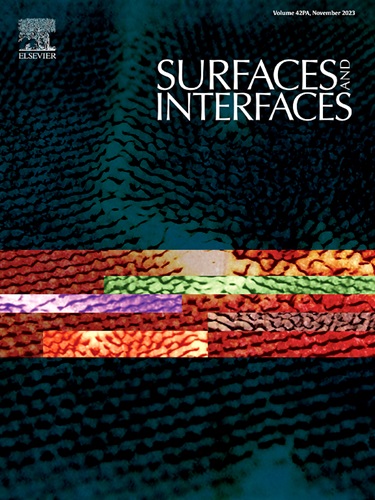Synergetic SEIRA sensing and catalytic performance of Au nanostars embedded onto dielectric silica spheres
IF 5.7
2区 材料科学
Q2 CHEMISTRY, PHYSICAL
引用次数: 0
Abstract
Light-matter interaction involving metal nanoparticles promotes sensing applications like surface-enhanced infrared absorption (SEIRA) and surface-enhanced Raman scattering (SERS), tuned over the entire visible frequency range utilizing the dielectric constant of the surrounding medium. Based on this simple yet significant aspect, we envisage core-shell nanostructures having a dielectric core and metal shell, reaping the benefit of diverse functionalities rolled in one single nanostructure. We indigenously develop an effective single-step synthesis protocol for fabricating silica spheres embedded with Au nanostars and vice versa in a seamless manner, validated through careful analytical and microscopic signatures. We also examine these metastructures using FDTD (finite difference time domain) simulation corroborated with the experimental data, visually representing the near-field enhancement effects in an effortless manner. SEIRA measurements essentially assess the invariably enhanced sensing of respective dyes, bromophenol (BP) and crystal violet, on the surface of our core-shell structures, both in their individual as well as mixed states, harnessing the highest selective dye enhancement to the best of knowledge. Additionally, Au nanostar-decorated silica spheres monitor the dye degradation at the molecular level through FTIR vibrational data analysis. Our present results elucidate synergistic effects between dielectric core and anisotropic-shaped metal shells, illustrating enhanced optical properties and catalytic functionalities, holding promise for advanced sensing platforms with improved performance and versatility.

求助全文
约1分钟内获得全文
求助全文
来源期刊

Surfaces and Interfaces
Chemistry-General Chemistry
CiteScore
8.50
自引率
6.50%
发文量
753
审稿时长
35 days
期刊介绍:
The aim of the journal is to provide a respectful outlet for ''sound science'' papers in all research areas on surfaces and interfaces. We define sound science papers as papers that describe new and well-executed research, but that do not necessarily provide brand new insights or are merely a description of research results.
Surfaces and Interfaces publishes research papers in all fields of surface science which may not always find the right home on first submission to our Elsevier sister journals (Applied Surface, Surface and Coatings Technology, Thin Solid Films)
 求助内容:
求助内容: 应助结果提醒方式:
应助结果提醒方式:


